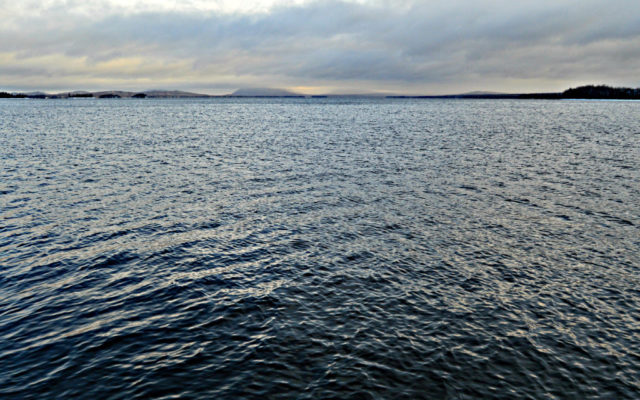
Moosehead Lake fishing report
One might ponder why the department doesn’t back the hatchery truck up to the shore of a pond and just keep tuckin’ the fish right to it until their backs are out of the water. This would certainly produce some pretty good fishing, right? Well, sometimes in fisheries management less is more.
A good example is the result from an extensive study we conducted here in the Moosehead Lake region several years ago on stocked brook trout ponds. The original goal of the study was to evaluate three different strains of hatchery brook trout to determine which strain had the best performance. But we also learned something else on the road to strain evaluation.
The study involved intensive netting including mark, release and recapture of brook trout. This allowed us to estimate the number of fish in the spring then again in the fall. We also estimated angler harvest during the open water season, and this pond was not open to ice fishing. The work was conducted for three consecutive years. So, we knew how many fish were in the pond at ice out, how many the anglers took home, and the number of fish remaining in the fall. Now, you might think that subtracting the number of fish removed by anglers during the summer from the spring estimate would equal the number left over in the fall. Seems as straightforward as getting your change at the sandwich shop, but it didn’t work out that way. Not even close.
In general, small ponds in Maine with depths greater than 25 feet undergo a stratification process in the summer. The water temperature from the surface to about 10 feet stays 70-72 degrees in the summer. The water stays colder at depths greater than 10 feet and brook trout prefer this cold refuge. However, the decaying organic matter on the bottom of the pond can deplete the oxygen below 15-20 feet, rendering it absolutely useless as fish habitat.
This is an important consideration for the angler. If you’re fishing in “the deep hole” and there is no oxygen at that depth then you can sit back and take a nap because there won’t be any fish coming by to harass you for the rest of the day. You need to find the “sweet spot,” where the water temperature is below 65 degrees and the oxygen is sufficient.
During our study, we found that nearly all of the 1,000 fish we stocked in the late fall survived the winter months and the pond was full of trout at ice out. During the summer, anglers removed fewer than 100 trout from this pond, but the fall estimate was about 700 trout fewer than the spring estimate. We determined that most of the loss came from the lack of suitable summer habitat. The narrow band of cool, well-oxygenated water between 10-20 feet could only support about 200-300 fish through the warm summer months.
We eliminated the “bottleneck” effect by reducing our stocking rate. We were able to stock fewer fish but still have roughly the same number at the end of the season. Fewer fish means more food and less competition for the limited amount of summer habitat.
The reduction in stocking improved the growth of those fish that survived the summer. Also, we started to see older fish in the population as crowding and over-summer mortality was reduced. Catch rates remained favorable and anglers are now handling bigger, fatter brook trout. As a result of this study, we were able to select the best strain of brook trout for our statewide stocking programs and in many cases, adjust stocking rates to maximize growth, catch rates and survival to improve fishing opportunities.